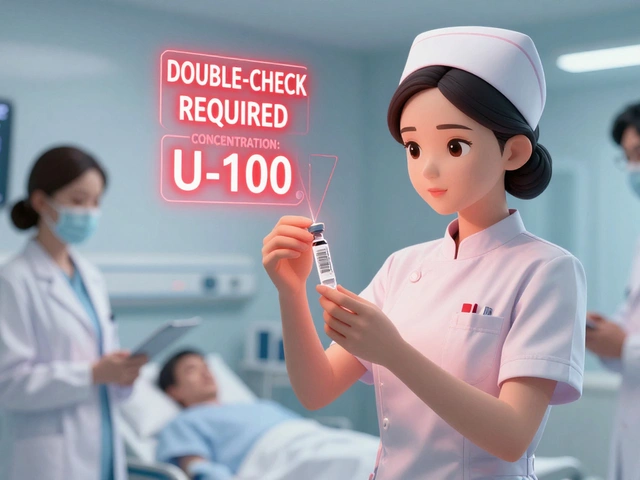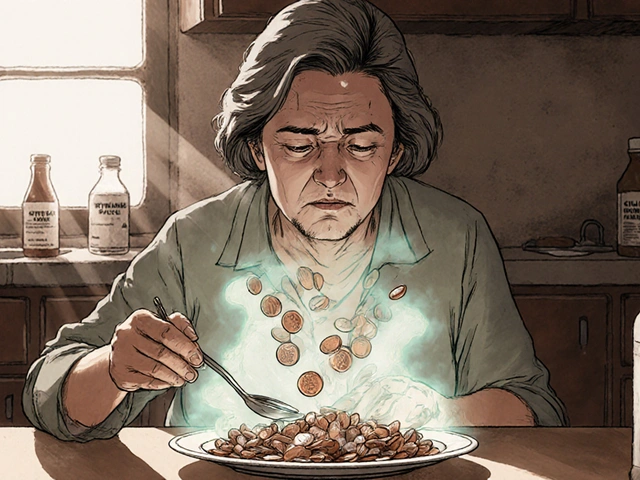Imagine sitting in your doctor’s office, feeling fine—maybe a little smug about skipping dessert last week—when suddenly you hear, “Your cholesterol’s too high.” Statins are the standard fix, but what if pills aren’t your first choice? Let’s peel back the layers and see what actually works: from food swaps and simple exercise tricks to those intriguing plant-based supplements. Sure, the promise of a ‘natural’ fix sounds tempting, but does anything measure up to statins when it comes to lowering stubborn LDL? Get ready for facts, numbers, and a few surprises along the way.
Why Cholesterol Matters—and How Statins Got the Spotlight
Cholesterol’s become the villain in breakfasts everywhere, with bacon and cheese eyed suspiciously at every health check. It’s actually vital—your body uses it to make cell walls, hormones, and vitamin D. Trouble starts when LDL (the so-called "bad" cholesterol) gets too high, sticking to artery walls and upping your risk of heart attacks and strokes. The Centers for Disease Control and Prevention (CDC) warns that nearly 94 million U.S. adults have borderline high cholesterol. And here's a stat that should give you pause: people with high cholesterol are twice as likely to develop heart disease.
For decades, statins have been the MVP of cholesterol-lowering drugs—think atorvastatin or simvastatin. They block an enzyme the liver uses to make cholesterol, dramatically slashing LDL by 30% or more in most users. According to a massive analysis published in The Lancet, statins reduce the risk of major cardiovascular events by about 25% per mmol/L reduction in LDL cholesterol. All sounds great, right? But statins have their own baggage: muscle aches, memory blips, even a slight uptick in diabetes risk for some people.
No wonder more people are looking for ways to get results—without relying on a prescription. Enter the growing buzz around diet, exercise, and so-called ‘natural’ supplements.
Diet: Can Food Choices Really Nudge Down Cholesterol?
Remember the ‘fat is evil’ era, when margarine replaced butter and bowlfuls of oat bran became a thing? Nutrition science has moved on, but some classics hold up. Oats, barley, beans, and lentils really do help: they contain soluble fiber, which latches onto cholesterol like a sponge and helps flush it out. Harvard’s School of Public Health calls this approach “one of the simplest, most powerful changes” for lowering cholesterol. Just one bowl of old-fashioned oatmeal a day can toss about 5% off your LDL.
Switching red meat for fatty fish (salmon, mackerel, sardines) is another gold star. Omega-3 fats won’t lower LDL directly, but they reduce heart risk in other ways—calming inflammation, thinning blood just a little, and even stabilizing dangerous heart rhythms. Sprinkle in more nuts, especially almonds and walnuts. An analysis of 61 controlled trials (yep, 61!) found that eating just 2 ounces of nuts daily cuts LDL by about 5%—not earth-shattering, but every bit counts, right?
The real magic trick is swapping out saturated fats (think cheese, cream, steaks) for unsaturated ones (olive oil, avocado, nuts). Research in the American Journal of Clinical Nutrition says people who swap just 5% of their daily calories from saturated fats to unsaturated drop their heart disease risk by nearly 20%. It’s not about totally avoiding fat—it’s about picking the right ones.
| Food | Effect on LDL (Bad) Cholesterol |
|---|---|
| Oats, barley, legumes | ↓ up to 5-10% |
| Nuts (2 oz daily) | ↓ about 5% |
| Fatty fish (2x/week) | No direct LDL drop, but lowers heart risk |
| Saturated fat replaced with unsaturated | ↓ up to 10-15% |
| Plant sterols/stanols (in fortifed foods) | ↓ up to 10% |
If only it was as easy as adding one ‘superfood.’ Sadly, there isn’t a magic berry or seed that wipes out sky-high cholesterol overnight. You’ve got to build these swaps into actual routines: cereal with fruit and nuts for breakfast, chili with beans and olive oil for dinner, snacking on roasted chickpeas instead of chips. Little changes stack up, often tipping cholesterol levels impressively over just a few months.
Move It: Exercise That Actually Changes Your Numbers
Turns out, you can’t out-jog a cheeseburger—at least not every day. Still, exercise is crucial for reshaping cholesterol. The American Heart Association spells it out: 150 minutes a week of brisk walking or biking (so, just over 20 minutes a day) is enough to push LDL down by 5% to 10% and boost HDL (“good” cholesterol) by a similar margin. Add some muscle work (think squats, push-ups, resistance bands), and you get even more bang for your buck—muscle eats up blood fats, helping to mop up cholesterol through the liver.
Where most people lose steam is thinking it needs to be sweaty, full-on workouts. It doesn't. Every bit counts. Walk the dog longer, dance around the kitchen, take the stairs when you don’t have to, and your body will thank you. A 2023 study in JAMA Cardiology showed that those who tracked and doubled their daily steps even without formal exercise had better cholesterol after six months than those who didn’t move much.
Extra benefit? Exercise also trims blood pressure, another major heart risk. “Physical activity may be the most underused cholesterol-lowering strategy we have,” says Dr. Nieca Goldberg, a cardiologist at NYU. Don't let perfect be the enemy of good: three or four brisk walks a week is way better than grand plans to join a gym and never go. Movement really tops the list for a reason—you feel stronger in ways that go way beyond your cholesterol numbers.

Supplements: The Promise and the Pitfalls
Juice bars, online ads, health food aisles—it seems like everyone’s selling a ‘cholesterol buster’ pill these days. But which ones are legit and which are just cash grabs? Let’s look at the main contenders people talk about most:
- Red yeast rice—This ancient staple of Asian medicine actually contains natural statin compounds. A 2019 meta-analysis from the Journal of the American College of Cardiology found red yeast rice can lower LDL by 15-25%. Sounds amazing, right? The catch: Quality varies wildly between brands, some deliver the punch, others are weak freebies. Worst, some contain a toxin called citrinin, which can hurt your kidneys. If you want to try red yeast rice, make sure it’s from a reputable brand and double-check for third-party testing.
- Plant sterols and stanols—These are often added to spreads, juices, and chews. They block the absorption of cholesterol in your gut and can drop LDL by about 10%. Enjoy them with meals to get the biggest benefit, but don’t expect miracles if your diet is full of junk.
- Fish oil—Great for triglycerides (another blood fat) but won’t budge your LDL much. Good if your numbers are high in both categories, but not a direct fix for cholesterol alone.
- Soluble fiber supplements—Psyllium husk (like in Metamucil) works fast and is safe. Just a teaspoon daily can swipe a few points off LDL, especially if your diet’s a little light on plants.
There are risks. Some natural products can interact with everyday drugs, or contain contaminants if not properly tested. Not all "natural" means "safe," and the FDA doesn’t regulate supplements as strictly as medicines. The upshot? If you're serious about a simvastatin substitute, check out solid reviews and options at simvastatin substitute, where different alternatives—including natural and prescription choices—are broken down with the pros and cons upfront.
“No supplement is a replacement for healthy living—think of them as a helper, not a magic bullet,” Dr. Walter Willett, professor of epidemiology and nutrition at Harvard, pointed out at a recent heart-health conference.
If you’re taking any medication, double-check with your provider before diving into new supplements. Some interactions can get nasty—especially if you’re on blood thinners or blood pressure meds.
The Statin Debate: Are the Benefits Worth the Downsides?
Statins are like the seatbelt of heart medicine: they won’t prevent every accident, but they massively reduce your risk if things go sideways. Researchers estimate that for every 1,000 people with high cholesterol who take statins for five years, about 20-25 major heart events (heart attacks, strokes) will be prevented. That's a pretty big payoff, especially for those with a history of heart trouble or other risks like diabetes or high blood pressure.
But not everyone needs them. Side effects, though not common, can be a deal breaker—muscle pain, brain fog, a tiny bump in blood sugar. Some people swear by lower doses or alternate-day approaches, but results vary. The larger problem? Statins don’t fix the root cause for everyone. If your cholesterol is up because of poor diet, zero movement, or untreated sleep apnea, a pill may only patch things for a while. Plus, some people’s livers are just more "statin-sensitive"—they flush out the drug too fast or not at all, making it tricky to find the right meds.
Doctors sometimes recommend combining low-dose statins with diet changes—or another med altogether, like ezetimibe, which stops cholesterol from being absorbed in your gut. At the same time, drug-free approaches aren’t as powerful. “Most people with moderate cholesterol can drop their numbers by 10-20% with lifestyle changes alone, but really high-risk folks often need the oomph of prescription meds,” says Dr. Michael Blaha, director of clinical research at Johns Hopkins.
Fact is, most experts agree it doesn’t have to be all or nothing. Many people use both: better food + more movement + maybe a gentle supplement + as low a dose of statin as needed. The real win? Lowering your long-term odds for heart disease, stroke, and early death—by whatever mix actually works for your body and life.
Actionable Tips for Lowering Cholesterol—Naturally or With Help
So where does this leave you—besides staring at a fridge half full of kale? Here are some tips that don’t sugarcoat the reality, but are totally doable:
- Get a real baseline. Don’t just fixate on LDL alone. Ask your doctor for a “lipid panel” that includes triglycerides, HDL, and LDL particle size, which sometimes gives more clarity on your risk.
- Start small, but be consistent. A 10-minute walk after dinner, one bowl of oatmeal a day, replacing one snack with almonds – these moves stack up way faster than perfect plans that never get off the ground.
- Cook at home more. It’s not about being gourmet; it’s about control. You set the oil, salt, and what’s really going in—that means fewer sneaky saturated fats and hidden sugars.
- Mix and match plant foods. The Mediterranean diet isn’t perfect for everyone, but it’s a great start: lots of veggies, legumes, whole grains, seafood, nuts, and healthy oils.
- If you try supplements, track and test. Don’t just pop random pills and hope. Give it 8-12 weeks, then retest your blood to see what’s actually moving the needle.
- Keep your doctor in the loop. Especially if you add anything "natural" to your routine, since some plant compounds and supplements really can interact with meds.
- Don’t obsess over one number. Lowering cholesterol isn’t a race or a contest. Heart health is the goal, and that takes a mix of ingredients—no matter what any ad or influencer says.
Sometimes the best plan is a mix of old-school and new ideas. Want to try diet tweaks first? Great. Need a statin safety net? That’s OK, too. Take the pressure off to "do it perfectly." The tiny decisions you make every day—at your plate, on your feet, in your shopping cart—will always be the best cholesterol medicine of all.








Posts Comments
Shubham Semwal July 25, 2025 AT 20:30
Look, I’ve seen this movie before-‘natural fixes’ for cholesterol. Oatmeal? Cute. Nuts? Adorable. But if your LDL is above 160, you’re not ‘saving money’ by skipping statins-you’re playing Russian roulette with your heart. Red yeast rice? That’s just unregulated statins with a side of kidney damage. And don’t get me started on those ‘plant sterol’ spreads-they’re just fancy butter with a markup. Real talk: if you need a drug to fix your lifestyle, take the damn pill. No shame. Just do it.
Sam HardcastleJIV July 27, 2025 AT 18:17
One is compelled to reflect upon the ontological paradox inherent in the pursuit of cholesterol reduction: is the body a machine to be optimized, or a sacred vessel to be harmonized? The pharmaceutical industry, in its relentless quest for biochemical dominion, has reduced the human organism to a lipid ledger. Meanwhile, the humble oat, unadorned by corporate branding, whispers a more ancient truth-that sustenance, in its purest form, may yet restore equilibrium. One must ask: who profits from the fear of cholesterol? And who, in turn, profits from the fear of fear itself?
Mira Adam July 29, 2025 AT 06:39
Ugh, another ‘natural alternatives’ fluff piece. You think eating nuts is gonna fix your 200 LDL because you binge cheese and Netflix? Newsflash: your ‘lifestyle changes’ are just a guilt shield so you can feel good while eating bacon-wrapped donuts. Statins work. Period. If you’re too lazy to change your life, don’t pretend a turmeric shot is gonna save you. Stop romanticizing denial.
Miriam Lohrum July 30, 2025 AT 03:05
There’s something quietly beautiful about the idea that healing doesn’t always come from a pill. The body remembers rhythm-walking after dinner, the crunch of oats in the morning, the quiet ritual of choosing an avocado over a croissant. It’s not about perfection. It’s about showing up, day after day, with gentleness. Statins have their place, yes-but so does the slow, stubborn act of choosing life, one meal, one step, one breath at a time. Maybe the real medicine isn’t in the bottle, but in the intention behind the choice.
archana das July 31, 2025 AT 12:56
My grandma in Jaipur never heard of statins. She ate dal, roti, spinach, and walked 5 km every day. Her cholesterol? Perfect at 78. No supplements. No fancy oils. Just food from the earth and movement built into life. We forgot how simple it was. You don’t need a PhD to fix your heart-you need to stop eating junk and start moving. Start with one bowl of oats. One walk. One less fried thing. It adds up. Trust me, I’ve seen it.
Emma Dovener August 2, 2025 AT 05:43
For anyone considering supplements: if you’re going to try red yeast rice, buy only from brands with USP or NSF certification. I’ve seen too many people get sick from cheap imports. Also, psyllium husk? Works wonders if you drink enough water. And yes-track your lipids after 12 weeks. No guesswork. Also, if you’re on blood thinners, skip the fish oil unless your doctor says yes. I’m a nurse. I’ve seen the side effects. Do your homework.
Write a comment